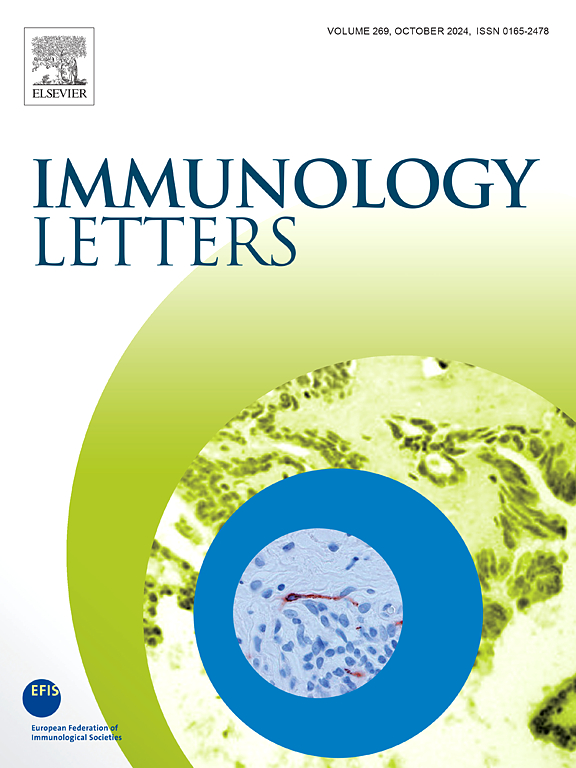The roles of collectins in renal diseases and transplantation
IF 3.3
4区 医学
Q3 IMMUNOLOGY
引用次数: 0
Abstract
The collectins are soluble C-type lectins and a group of proteins characterized with common structural features: a collagen-like domain and a carbohydrate-binding domain. These proteins are essential components of the innate immune system, pivotal for recognizing and eliminating pathogens to protect against infections. Over recent decades, research has significantly advanced our understanding of collectins. Beyond their fundamental role in host defense, collectins have been emerged as multifunctional proteins involved in modulating inflammatory and immune responses, facilitating the clearance of cellular debris, and even stimulating cell proliferation. These diverse roles are critical for maintaining physiological balance and hold substantial implications in various disease processes, particularly in renal diseases and transplantation. Here, we review the roles of collectins in renal diseases and transplantation focusing on four prominent members of the collectin family: mannose-binding lectin (MBL), surfactant proteins (SP-A and SP-D), and collectin-11 (CL-11). These proteins have gained considerable attention in current research due to their roles in renal diseases and transplantation, shedding light on their impact beyond traditional immune defense mechanisms. Understanding their involvement in these contexts is crucial for exploring potential therapeutic avenues and interventions aimed at mitigating renal pathology and improving outcomes in transplantation settings.
采集蛋白在肾脏疾病和移植中的作用。
采集蛋白是可溶性 C 型凝集素,是一组具有共同结构特征的蛋白质:一个胶原蛋白样结构域和一个碳水化合物结合结构域。这些蛋白质是先天性免疫系统的重要组成部分,在识别和消灭病原体以防止感染方面起着关键作用。近几十年来,研究极大地促进了我们对采集蛋白的了解。除了在宿主防御中的基本作用外,采集蛋白还被认为是一种多功能蛋白质,参与调节炎症和免疫反应,促进细胞碎片的清除,甚至刺激细胞增殖。这些不同的作用对于维持生理平衡至关重要,并在各种疾病过程中,尤其是在肾脏疾病和移植中具有重要意义。在此,我们回顾了采集蛋白在肾脏疾病和移植中的作用,重点是采集蛋白家族的四个主要成员:甘露糖结合凝集素(MBL)、表面活性蛋白(SP-A 和 SP-D)以及采集蛋白-11(CL-11)。由于这些蛋白在肾脏疾病和移植中的作用,它们在当前的研究中获得了相当大的关注,揭示了它们在传统免疫防御机制之外的影响。了解它们在这些情况下的参与对探索潜在的治疗途径和干预措施至关重要,这些途径和干预措施旨在减轻肾脏病理变化和改善移植手术的预后。
本文章由计算机程序翻译,如有差异,请以英文原文为准。
求助全文
约1分钟内获得全文
求助全文
来源期刊

Immunology letters
医学-免疫学
CiteScore
7.60
自引率
0.00%
发文量
86
审稿时长
44 days
期刊介绍:
Immunology Letters provides a vehicle for the speedy publication of experimental papers, (mini)Reviews and Letters to the Editor addressing all aspects of molecular and cellular immunology. The essential criteria for publication will be clarity, experimental soundness and novelty. Results contradictory to current accepted thinking or ideas divergent from actual dogmas will be considered for publication provided that they are based on solid experimental findings.
Preference will be given to papers of immediate importance to other investigators, either by their experimental data, new ideas or new methodology. Scientific correspondence to the Editor-in-Chief related to the published papers may also be accepted provided that they are short and scientifically relevant to the papers mentioned, in order to provide a continuing forum for discussion.
 求助内容:
求助内容: 应助结果提醒方式:
应助结果提醒方式:


